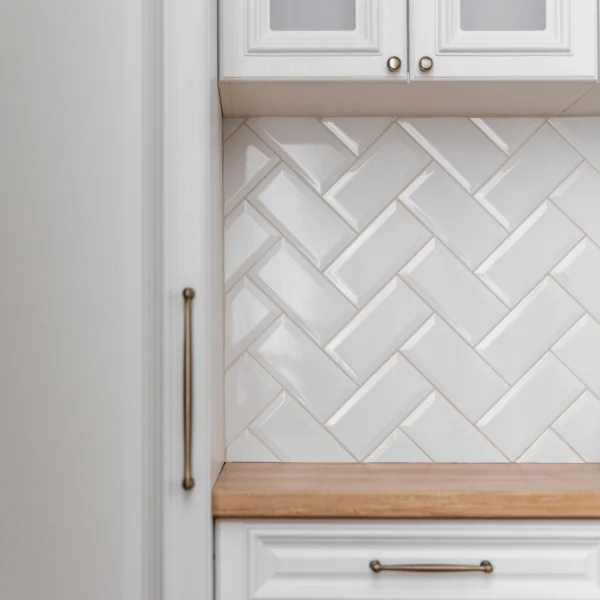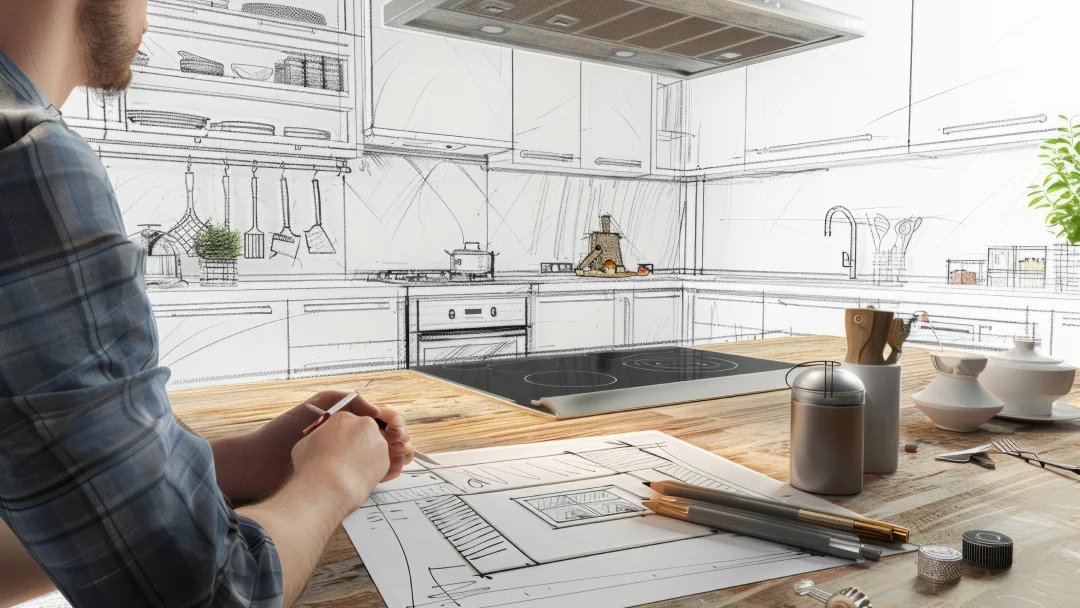Remodelling a kitchen is one of the most common and rewarding renovation projects in a home. This type of transformation goes beyond simply changing cabinets or countertops—it’s a complete redesign of the space aimed at improving functionality, comfort, and aesthetics.
To make your project a success, it’s essential to plan carefully, assess your real needs, and understand the key steps involved in a kitchen renovation.
1. Define Your Needs Before Remodelling a Kitchen

Before starting any work, clearly define what you want to improve. Remodelling a kitchen can serve several goals: modernizing the design, optimizing space, improving traffic flow, or integrating new, more efficient, and energy-saving appliances.
Key questions to ask yourself from the start:
- How many people use the kitchen daily?
- What type of storage best suits your lifestyle?
- Do you need a central island, a breakfast area, or a multifunctional space?
- Which materials fit your budget and maintenance preferences?
A precise analysis of your needs will help design a kitchen that’s both stylish and practical, built to last over time.
2. Plan the Project in Detail
Proper planning is the key to success when deciding to remodel a kitchen. You must consider both the technical aspects (plumbing, electrical, ventilation) and the aesthetic ones (materials, colours, style).
Ideally, create a detailed layout or work with a kitchen designer who can develop an ergonomic plan that meets building standards and recommended dimensions.
Important points to consider:
- The kitchen work triangle (sink, fridge, stove).
- Functional and ambient lighting.
- Materials resistant to humidity and heat.
- Integrated storage solutions to maximize space.
Your plan should also include a realistic timeline to avoid delays and unexpected costs.
3. Choosing Materials and Finishes

Materials play a crucial role in the durability and overall style of your kitchen. The choice will depend on your priorities—durability, maintenance, look, or budget.
Popular options in Quebec include:
- Countertops: quartz, granite, high-pressure laminate, solid surface, or butcher block.
- Cabinets: melamine, polymer, lacquered wood, or thermofoil.
- Backsplash: ceramic, glass, natural stone, or stainless steel.
- Flooring: luxury vinyl, ceramic tile, or engineered wood.
As of 2025, current trends favour matte finishes, neutral tones, and clean lines, but every project should reflect the homeowner’s personality and functional needs.
4. Understanding the Budget for Remodelling a Kitchen
Many homeowners wonder how much it costs to remodel a kitchen, and the truth is there’s no single answer. The total cost depends on the size of the space, the complexity of the work, the choice of materials, and whether you hire professional contractors.
In general, the budget for remodelling a kitchen can be divided as follows:
- 35–45% for cabinets and custom furniture.
- 20–30% for countertops and backsplash.
- 15–25% for labour, plumbing, and electrical work.
- 10–15% for appliances and lighting.
- 5–10% for contingencies and on-site adjustments.
It’s recommended to set an overall budget with a safety margin, as adjustments may arise depending on the building’s structure or material delivery times.
5. The Concrete Steps of a Kitchen Renovation
Once planning is complete and the budget is set, the renovation can begin. Remodelling a kitchen follows a logical sequence of work:
- Demolition and site preparation: removing old elements, inspecting walls and flooring.
- Structural, plumbing, and electrical work: ensuring compliance and preparing outlets for new appliances.
- Installation of cabinets and countertops: precise alignment, surface cutting, and secure fitting.
- Backsplash and flooring installation: aesthetic and durable finishes.
- Lighting and final adjustments: installing fixtures, handles, and accessories.
This sequence helps minimize errors and ensures a flawless finish.
6. Optimizing Functionality and Durability
Remodelling a kitchen is also an opportunity to improve energy efficiency and sustainability. Eco-friendly choices are increasingly popular:
- Use local or recycled materials.
- Install high-efficiency (Energy Star certified) appliances.
- Choose LED lighting.
- Opt for easy-to-clean surfaces that reduce chemical use.
These decisions not only reduce environmental impact but also enhance long-term comfort and quality of life.
7. Hiring Qualified Professionals
While some homeowners prefer to handle parts of the work themselves, hiring professionals ensures compliance, safety, and superior results. Kitchen designers, general contractors, and skilled carpenters have the expertise to coordinate every step of the process efficiently.
To bring your kitchen renovation project to life with turnkey solutions and personalized support, contact Cuisi Boutique Brossard today.

